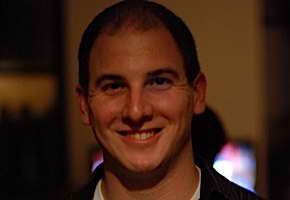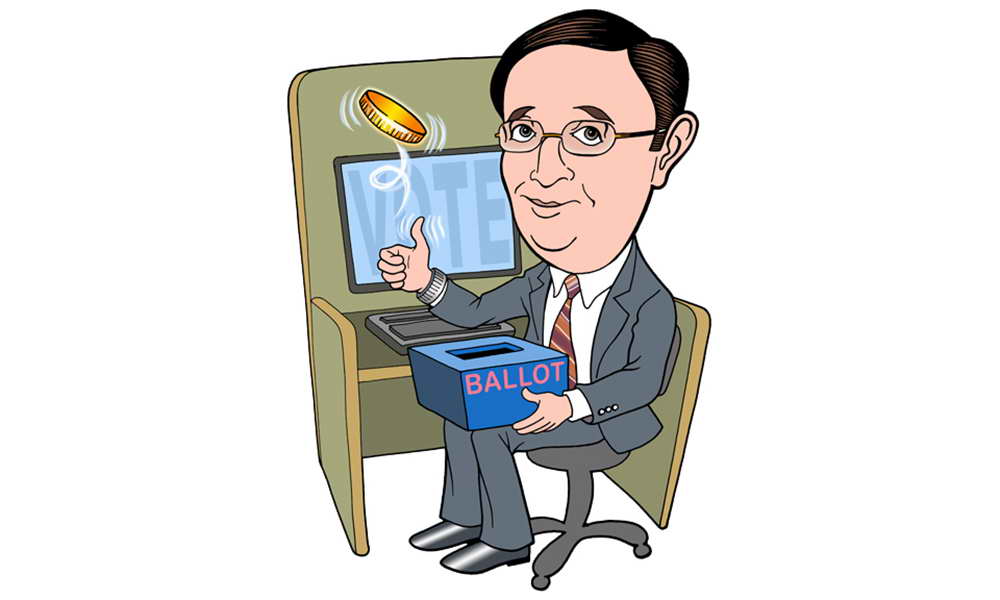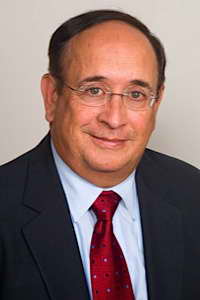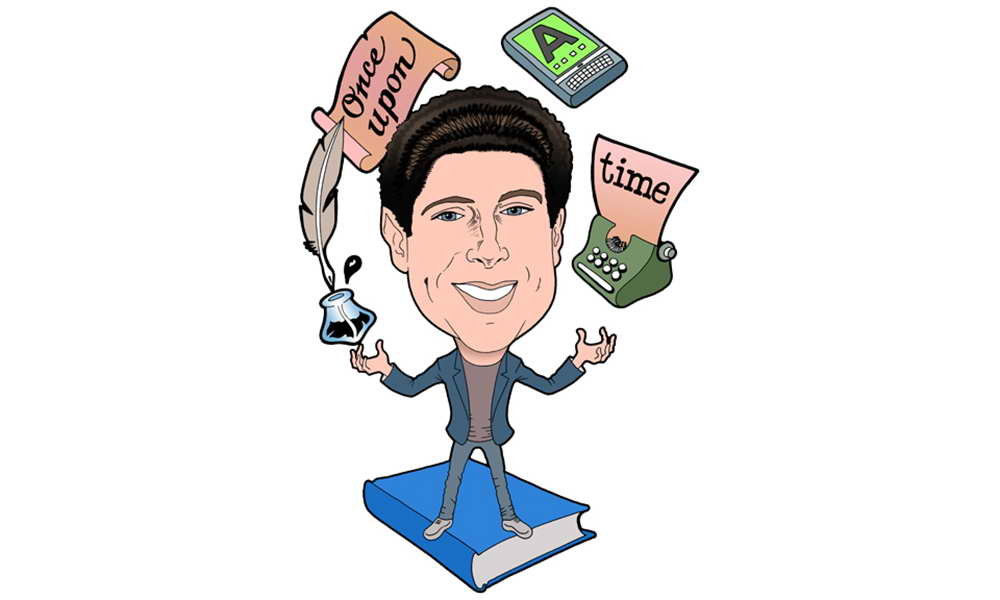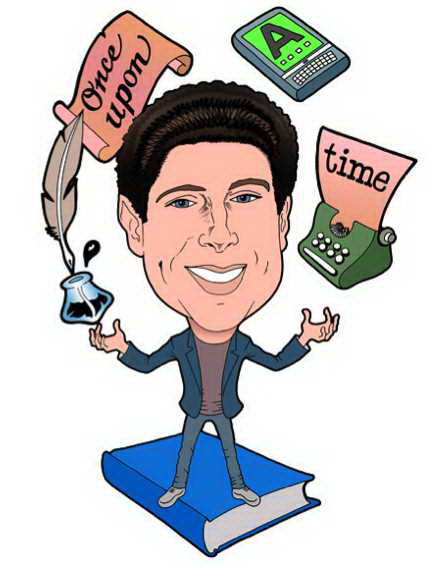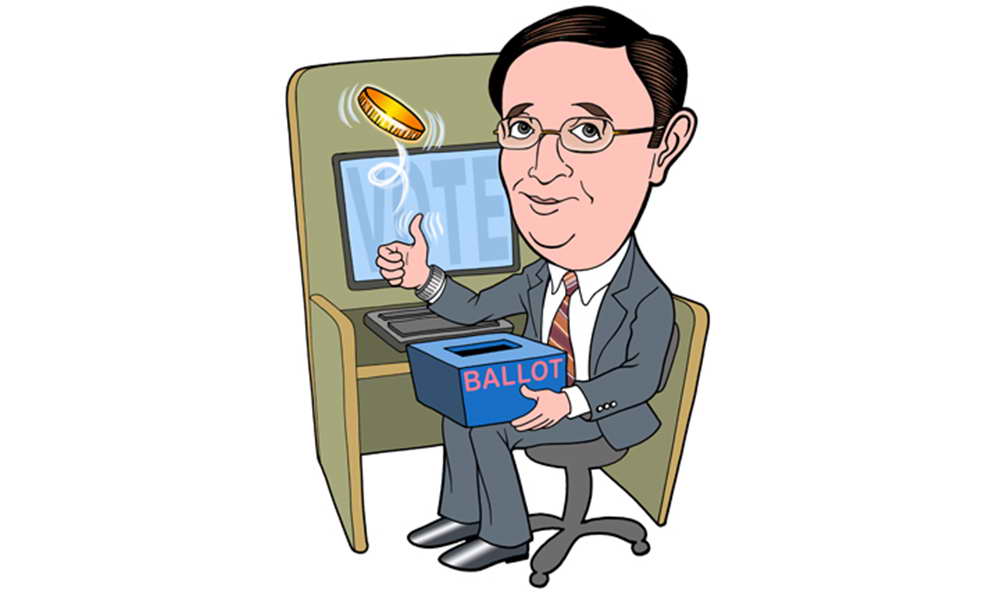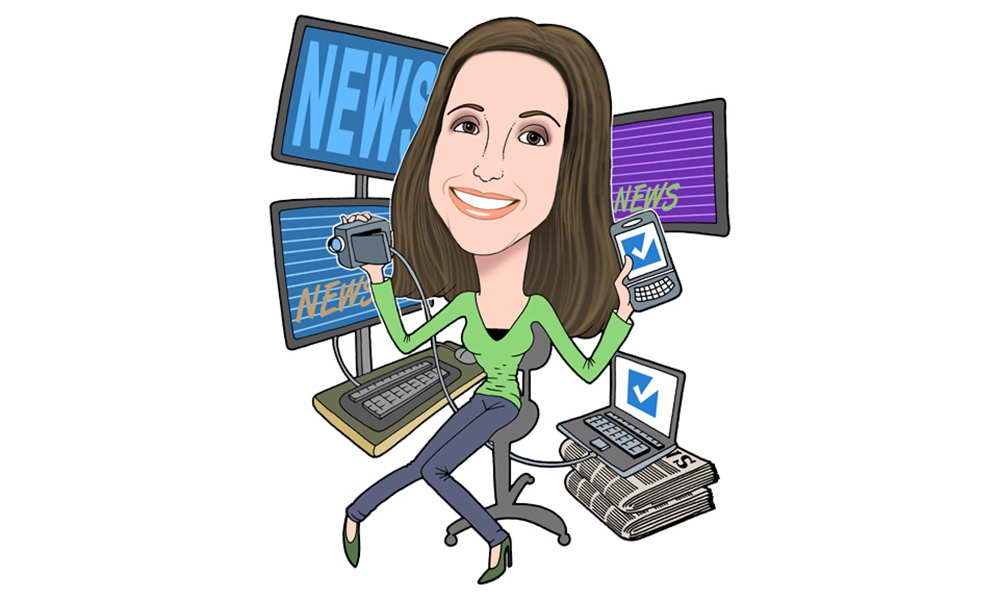By John Sparks
Sree Sreenivasan is the Dean of Student Affairs at the Columbia University School of Journalism and a contributing editor to DNAinfo. In an interview with the Marist Poll’s John Sparks, Sreenivasan discusses the advent of social networking, training journalists so that they’re equipped for the digital world, and why blogs and traditional news sites can coexist.
John Sparks
Sree, the Marist Institute recently conducted a poll on technology. We asked U.S. residents if they had a profile on the social networking site like MySpace, Facebook, or LinkedIn. 59% of the American public said, “No, they did not.” Do you think that more folks will in the future?
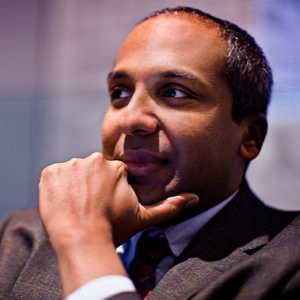
Sree Sreenivasan (Photo by Joseph Lin)
Sree Sreenivasan
I believe you’ll see many more people joining social networking websites as they understand the value of it. I teach in my classes that this is radio in 1912. This is TV in 1950. And it’d be as if we were polling at that time, and as we know, television would evolve in a hundred different ways after that, and I imagine the same amount of changes that we’ve seen in TV in the last half a century, we’re going to see in the next few years in social media.
John Sparks
One thing that we hear a lot about these days is Twitter, and the Marist Institute also asked folks if they personally had a Twitter account.
Sree Sreenivasan
I can’t wait to hear this answer.
John Sparks
92% said “No.” Does that say that most Americans think it’s absurd to share their every waking minute with the rest of the world, or do they just not understand what a Twitter account really is?
Sree Sreenivasan
It might be a combination of both. And it would… If they… I don’t know if you asked also how many people considered having one and decided not to have it, or how many have actually heard of Twitter itself as opposed to actually have an account. Twitter, again, this is so early in its days that I remember many of the conversations that we had about email, where you had about faxes, we had about Web sites. One of my really good friends, I said, “You must have a Web site.” And he said, “Are you kidding? Who’s going to care what I’ve done? And why would I need a profile on the Web?” And now he loves his Web site so … and this is the… even other people I know who hated the idea of using email because they loved writing, now can’t get — can’t stop sending me email. So this is all slow processes. People understand what is going — what is worth their time and energy and what is not. We should also keep in mind that I’m — and when we teach, we don’t focus on specific tools or specific companies. People ask me: “Is Twitter going to be here for the next 20 years?” I said, “I don’t know. If I knew that, I’d be a good predictor or person able to predict things.” But what I do know is the idea of this micro blogging, which is what Twitter does, is going to be around for a long time.
John Sparks
You know one thing we read a lot about and hear a lot about concerns technology and personal relationships. We asked if technology made those personal relationships better or worse, and 38% of the respondents said it improved their personal relationships, 6% said no, but more than half, 56%, said that it made no difference. Do you think … what kind of effect do you think technology has on personal relationships?
Sree Sreenivasan
I’m sorry to kind of come back to you with a question, but …
John Sparks
Sure.
Sree Sreenivasan
Was this people who already had accounts or people who … were these people who had said, “Yes, they have a Facebook account or …”
John Sparks
Did not distinguish in this instance.
Sree Sreenivasan
Ah okay. So I guess your question was: Has technology affected people’s lives or their relationships?
John Sparks
Yeah, their personal relationships.
Sree Sreenivasan
I think that the rise of email, social media, Facebook has had a tremendous impact on the lives, everyday lives of people. It depends on folks who have access to the technology. Right here in New York, we have a lot of people who are off the grid, so to speak, because they have a lot of other issues in their lives that they need to deal with rather than are they digital haves. You know, the conversation about digital haves or have-nots with the digital divide. But among the people who are online, I’m a big believer that all this technology has had an impact. Imagine how many more people are able to share the photograph of their children with their — with the grandparents in a way that they couldn’t before or imagine how much of an impact this kind of media has had on keeping in touch with family members, with friends from high school, et cetera. Now just because I can keep in touch with everybody from high school doesn’t mean I want to keep in touch with everybody from high school, but that general sense of kind of tremendous impact that this has had, and I can give you a couple of examples if we have the time.
John Sparks
Sure.
Sree Sreenivasan
And one is that I went to give a talk to Columbia Alumni in Naples, Florida, and this was a room filled with people, be fair to say about the age of 70. These were retired folks, most of them. And they were all there either because they were already on Facebook or curious about it because they want to use it to keep in touch with their friends and family, and I always understood that the problem about Facebook was teenagers and people in their 20’s worried that their mothers want to be their friends on Facebook. But at this event, a lady in her 70’s said that she was newly single and was worried about her daughter, her daughter, keeping tabs on her via Facebook. And so when you think that this is something that’s always … I always thought it went up as a problem in terms of generation, but here was a 70-something worried about the 40-something keeping tabs on her. So this is where we’re kind of seeing a change in how people deal with information, how they’re interacting, how they’re sharing. But it’s still early, and we’re going to continue to watch that evolve.
John Sparks
Do you think the technology has helped us to become more socially adept or do you think it’s isolated us into our own little worlds?
Sree Sreenivasan
Right. So you should know that I am a technology evangelist with a lower case “e,” but I’m also a skeptic. So obviously you know my bias is I’m pro technology. I believe technology in the long run makes things cheaper, better, faster. That doesn’t mean it does that to every single thing and doesn’t mean that you can’t get isolated, as we’ve seen with some of this technology. We’ve seen people addicted in a way that they — at the expense of everything else, they spend their time doing whatever it is online. But at the same time, I can give you any number of stories about how people have been affected in a positive way. And we should also acknowledge that journalists like stories of problems rather than kind of grandma connects with young grandson over email and they’re sharing his homework projects. They’re doing homework together on the Internet. Boring story. Young kid allegedly cyber-stalked and bullied by someone online story, that’s part of kind of journalism in itself and how it looks, unfortunately, at the news. And despite all the bad news you see about technology on the front page of the paper or on TV, I believe that the vast majority of the Internet is at worst kind of harmless, or it’s not a problem. But of course there are pockets of problems, and people should really be vigilant, skeptical, careful, but that’s not the message that the media sends out.
John Sparks
You teach journalism at Columbia. I teach journalism at the University of North Texas. Convergence is — some people say it’s the future. I say it’s the present. But I’m just curious, are you teaching technology, or do you concentrate on technique in using that technology?
Sree Sreenivasan
I tell students that we have to teach — that they have — journalists need to learn two things: New Media or digital media skill set. They need to have a digital media skill set and a digital media mindset, and anybody can teach you the skill set. Your 12-year-old nephew can teach you that or niece can you teach that. But what we — you need is that mindset so you understand how to deal with technology and how to use it and how to respond to the kind of upheaval that it’s causing all around us, and that’s not something … because I’m not going to be there to help them push the buttons the rest of their life. But you and I as teachers if we can teach them to think about technology, understand what works and what doesn’t, how to be both evangelist and the skeptic, I think they’ll have a very good future. One of my colleagues here, Sig Gissler, who runs the Pulitzer Prize Program, he coined a word called “the tradigital journalist,” that is the traditional journalist with a digital overlay, and that’s what we tell people you need to be.
John Sparks
Technology has no doubt had its effect on the news business — newspaper circulation has shrunk, papers are in trouble, so are television stations. Is there a future for students studying journalism these days?
Sree Sreenivasan
Well you know our applications last year were up 40%, which was kind of stunning to a lot of people. But I got to say what it is is that young people are incredibly optimistic. They feel that they are seeing more journalism being done around us than ever before, more entrepreneurship, more savvy about the world, and more interest in the world, and they’re optimistic in a way that old fogies like us are not.
John Sparks
You know some people might say that the problem is the business model. Newspapers have been giving away their products online. Is it hard to put the genie back in the bottle once you’ve let it out? In other words, will newspapers be able to start charging for online content and thus be able to survive do you think?
Sree Sreenivasan
Well, the newspaper question is a hard one. I’m a big believer in print, and I subscribe to two daily newspapers and five magazines. I think there’s still something magical about it, and I believe that for the immediate future there is still — newspapers aren’t dead yet, but there are some certainly that are dying and some are going to evolve and make it through and others are not. God bless them, they’ve got do all they can, and we need a bunch of different efforts, a bunch of different projects and experiments. Nobody has the answer. And you interview five pundits, they’ll tell you five different things that they know for sure about what works and what doesn’t, and what I say is if we knew for sure, then we wouldn’t all be sitting here having to have these conversations.
John Sparks
Sure. What about television with DVRs? Can television news survive? What can television do to survive as an advertising-based medium?
Sree Sreenivasan
Well television is also trying in different ways, and I think again, there needs to be a lot of efforts in different kinds of storytelling, different kinds of engagement with the audience, different efforts that haven’t necessarily been tried, and I make the analogy that this is kind of bottom of the eighth in a … you know, you and I are watching the World Series and we see players who take pitch after pitch instead of making — taking a swing, right.
John Sparks
Right.
Sree Sreenivasan
And I want journalists to take a swing. Don’t just stand there because then you — all you’re doing is complaining: Gee, this has happened to me. Oh, woe is me. Well I ask them, “How tradigital are you? Do you have a new media skill set? Do you have a new media mindset?” “No.” “Well, you’re going to be in trouble.”
John Sparks
Is our democracy at stake in a society in which people do not read, don’t watch television news, don’t listen to the news on the radio?
Sree Sreenivasan
Look, I would say that there are millions of people who don’t do any of those things already, and you don’t need every single person to be invested in every single area or every single pillar of society for it to be useful. What you need are people who are invested, a large proportion who are invested and care and all of that stuff, and as long as that happens, that’s fine. Not everybody needs to be engaged. It’d be great if everybody was, but that’s not going to happen.
John Sparks
You know another thing we hear about is with the technology the ability…
Sree Sreenivasan
By the way, the comparison I would make is to voting. I mean, wouldn’t it be great if we had the same voting turnout as they do in Sri Lanka, 75, 80%? We don’t. You can’t force people to be engaged. People sometimes don’t care, and they leave it to others. It’s those others that need to make sure that they’re engaged.
John Sparks
Absolutely. You know we also hear about this business about tailoring our content, our own likes and dislikes, and the ability to do that with technology. Does that prevent us from being informed about important issues which we need to know about, and how do you overcome that problem?
Sree Sreenivasan
In what terms exactly do you mean?
John Sparks
Well, there’s all the talk about how broadcasters, newspaper publishers, journalists talk about tailoring content, how the consumer can tailor their content online so that they just view or read topics that are of interest to them and block out all the rest. My question really is: Does that ability prevent us from being informed about important issues which we need to know about it?
Sree Sreenivasan
Sure. You’re talking about something that we’ve been discussing for years, the idea of kind of creating your own newspaper or …
John Sparks
Right.
Sree Sreenivasan
There are various different versions of this. Google has a section where you can personalize Google News. What I like about that particular thing is you can personalize it so I’m getting only important stuff, such as Britney Spears, Balloon Boy, or whatever. And, John, I know that’s what you love.
John Sparks
(Inaudible) …
Sree Sreenivasan
But, but they also force you to read what they think are the top important stories according to the Google algorithm. And I think, let people drill down and be as specific as they want, but force them to do a little bit on the top, and I think you’ll be fine. And we’ll see. By the way, this idea of personalizing everything, people are too lazy to actually do it on a regular basis.
John Sparks
There’s a difference of course between blogs laced with opinion and stories written about so-called citizen journalists who have no training in fact-finding or attribution. There’s a difference between that and objective reporting of folks that are trained in journalism. Does the public understand the difference and … do you think … are they able discern and make the distinction?
Sree Sreenivasan
I think that people understand — as somebody who cares deeply about professional journalism, we’re charging students who come here to get a Master’s Degree in Journalism — that there’s an immense value in professional journalists, in people who know the topic well, are able to interpret, analyze, explain, et cetera, but at the same time, I learn an incredible amount of information from amateurs who care deeply about a certain topic. Traditionally in journalism, experts have been professors with diplomas on their wall and tweed jackets and patches on their elbows and things like that, and that is one way to provide expertise is going to people like that. But expertise also comes from just passion and knowledge and working in a certain field, and those people have a lot to contribute in discussions on that particular field. There’s so many blogs that I read on a regular basis. I believe, by the way, and this is controversial for a boring professor like me to say, but in every area of the human interest there is a blog and a Twitter feed that journalists and others need to read because the blog and/or the Twitter feed are approaching in importance the traditional mainstream media outlet that dealt with that topic. And that doesn’t mean it’s supplanting, it’s the only source, but it needs to be … we need to change our media diet to be open to these other tools, these other, not just tools, but also these other sources of information.
John Sparks
Absolutely. I could go on and talk to you all day about this because it’s my bread and butter and my passion as well, but I know that you have a busy calendar. In fact, I’ve seen your online calendar, and I must say trying to navigate that sometimes to get an appointment like this is challenging sometimes for those of us that who are maybe not as technologically adept as we should be.
Sree Sreenivasan
My Twitter account is twitter.com/sreenet, S-R-E-E-N-E-T, and I’d love to carry on this conversation with others if they’re interested.
John Sparks
Is there anything else that you’d like to add before we call a conclusion to our interview?
Sree Sreenivasan
I would just … yeah, I think we’re all we’re concluding is the physical time we’ve got for this. The future is to be determined and that’s what’s so exciting, and it’s hard for people in their 40’s and 50’s and 60’s who have a mortgage and all of that, but young people have tremendous optimism, tremendous energy and just — that’s why you and I teach because we work and these people keep you — give you a level of excitement that is very hard to come across ourselves, I think.
Related Stories:
12/18: The Twitter “Craze:” Not So Much
12/18: Social Networks Grow in Popularity Among U.S. Residents
12/18: Technology’s Impact on Relationships
This Is Your Brain on Social Networks … Any Questions?


